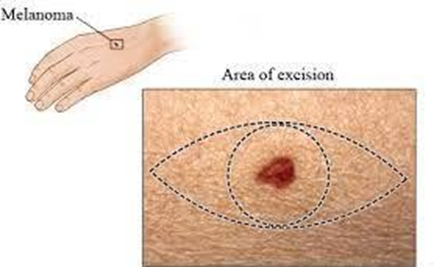A client is about to undergo a closed reduction of a fracture. In addition to analgesia, the nurse suggests that the client listen to an audiotape of music. Which of the following nonpharmacologic interventions for pain management is the nurse using?
Distraction
Biofeedback
Guided imagery
Meditation
The Correct Answer is A
A. This statement reflects a sense of blame and responsibility but may not necessarily indicate a body image disturbance.A. Listening to music is a form of distraction, diverting the client's attention away from pain.
B. Biofeedback involves using electronic monitoring to help individuals gain conscious control over physiological processes, not applicable in this context.
C. Guided imagery involves using the imagination to create calming mental images, not directly related to listening to music.
D. Meditation involves a state of focused attention and may not be as directly applicable during a medical procedure.
B. This statement may indicate frustration with physical therapy progress but does not directly address body image.
C. This statement reflects guilt or self-blame but may not necessarily indicate a body image disturbance.
D. This statement directly addresses the client's perception of their body image following the amputation.
Nursing Test Bank
Naxlex Comprehensive Predictor Exams
Related Questions
Correct Answer is D
Explanation
A. Cryosurgery involves freezing the lesion and is typically used for benign lesions.
Malignant melanoma often requires more extensive treatment.
B. Radiation therapy may be used in certain cases, but surgical excision is often the primary treatment for malignant melanoma.
C. Chemotherapy is not the primary treatment for localized malignant melanoma but may be used for advanced cases or metastatic disease.
D. Surgical excision is the primary treatment for localized malignant melanoma, aiming to remove the tumor along with a margin of normal tissue.

Correct Answer is ["A","C","E"]
Explanation
A. Turning off fans and heaters can help prevent the circulation of potentially contaminated air.
B. Evacuation may be necessary in extreme cases but should be done following established protocols and considering the safety of residents.
C. Closing doors and windows helps minimize the entry of external air, reducing exposure to potential contaminants.
D. Keeping fireplaces burning may increase the risk of indoor air pollution and is not a recommended action during a chemical disaster.
E. Placing wet towels under doors can help create a barrier to limit the entry of external air and contaminants.
Whether you are a student looking to ace your exams or a practicing nurse seeking to enhance your expertise , our nursing education contents will empower you with the confidence and competence to make a difference in the lives of patients and become a respected leader in the healthcare field.
Visit Naxlex, invest in your future and unlock endless possibilities with our unparalleled nursing education contents today
Report Wrong Answer on the Current Question
Do you disagree with the answer? If yes, what is your expected answer? Explain.
Kindly be descriptive with the issue you are facing.
